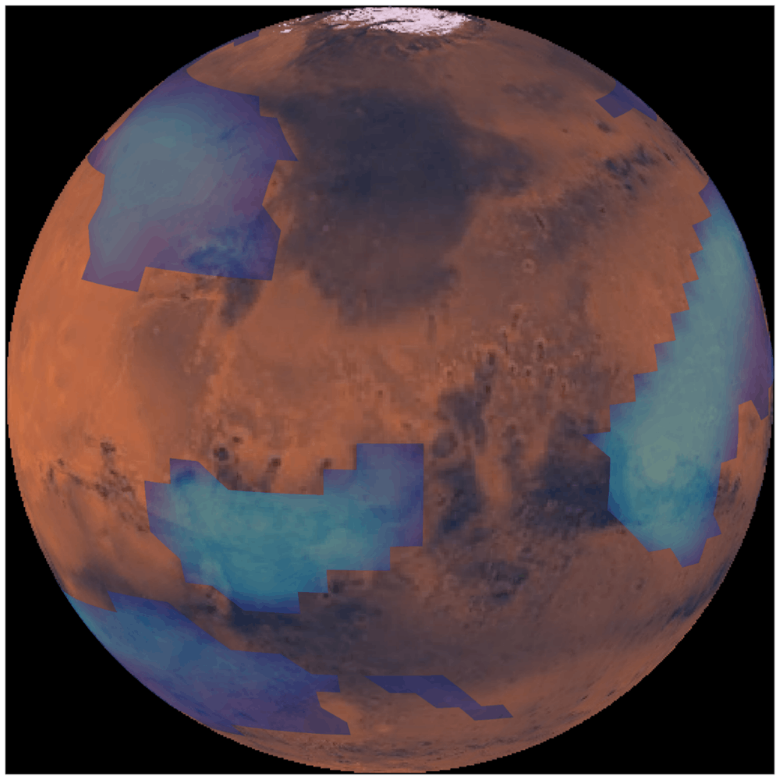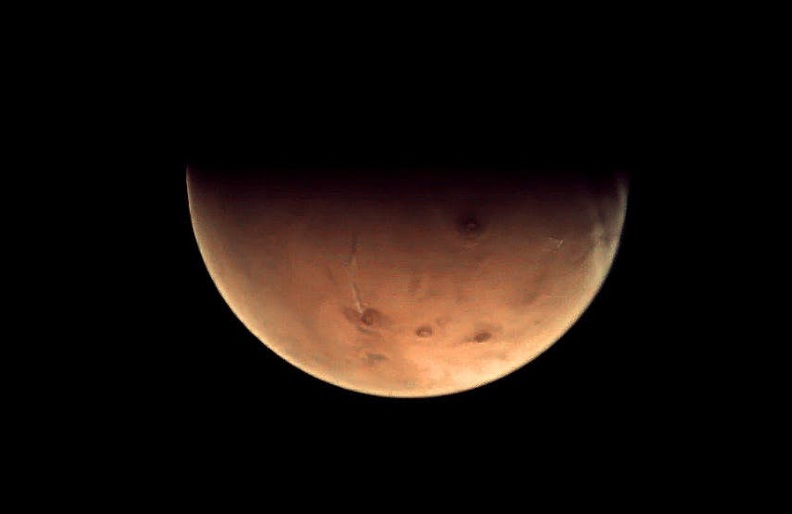Martian clouds could have an alien origin, according to a newly-published paper. The study suggests that mid-level clouds form above the Red Planet due to a phenomenon called “meteor smoke,” which occurs when space debris is shredded upon entering the Martian atmosphere.
As far as planetary atmospheres go, Mars’ gaseous shell is pretty pathetic. It is incredibly tenuous, with an atmospheric volume less than 1 percent of Earth’s. The Martian atmosphere wasn’t always this weak, though. There is evidence to suggest that it was once potent enough to allow for the existence of liquid water on the planet’s surface.
Despite being a mere shadow of its former self, the Red Planet’s atmosphere can still conjure dust devils, or even shroud the entire planet in a colossal dust storm. One such storm led to the demise of NASA’s Mars Opportunity rover, which was last heard from on June 10, 2018. Alongside killing defenseless rovers, the atmosphere also protects the planet from meteorite impacts, and is even capable of forming clouds.
Clouds on Mars aren’t created in exactly the same way that they are on Earth. The water molecules that form the bulk of the clouds that we see cannot coalesce on their own – they need something to adhere to. On our Blue Planet, water molecules clump around grains of sea salt or dust that have been hefted high into the air. When enough of these grains and molecules collect, clouds form and become visible from the ground.
Scientists do not believe that this same process kick starts cloud formation in Mars’ middle atmosphere, which is a region ranging between 18 to 37 miles (30 to 60 km) above the surface. So what do water ice particles interact with to form clouds on Mars?
According to the new paper, the answer may come not from the planet’s surface, but from interplanetary space. Observations made by NASA’s MAVEN spacecraft, which is currently in orbit around the Red Planet, tell us that roughly 2 to 3 tons of space debris, often in the form of meteors, enters the Martian atmosphere each day.

These meteorites are torn apart upon striking the thin gaseous shell, injecting large showers of dust – referred to as meteoric smoke – into the atmosphere.
The team behind the paper set out to discover whether the material being deposited in the atmosphere from outer space could act as the seeds for cloud formation, by giving water ice molecules something to clump around. The researchers used complex computer simulations designed to mimic the dynamics of the Martian atmosphere, in order to test their theory. They discovered that once they included meteor dust in the simulation, clouds appeared.
“Our model couldn’t form clouds at these altitudes before,” said Victoria Hartwick, a graduate student in the Department of Atmospheric and Ocean Sciences (ATOC) at the University of Colorado Boulder, and lead author of the new study. “But now, they’re all there, and they seem to be in all the right places.”
The clouds were relatively tiny compared to those on Earth. However, they can still have a significant effect on the Martian atmosphere. For example, depending on the region examined by the team, the clouds appeared to cause a temperature swing up or down of up to 18 °F (10 °C).
The researchers believe that their work on present-day cloud formation could help shed light on the planet’s atmospheric evolution, and more specifically how it was once capable of supporting liquid water on the Martian surface.
“More and more climate models are finding that the ancient climate of Mars, when rivers were flowing across its surface and life might have originated, was warmed by high altitude clouds,” comments Brian Toon, a professor in ATOC and co-author of the new study. “It is likely that this discovery will become a major part of that idea for warming Mars.”
The paper has been published in the journal Nature Geoscience.
Source:University of Colorado Boulder
Author:Anthony Wood

